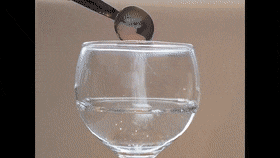Week 6
Class 1
Mixtures Reading Comprehension
Today we will review the main aspects of mixtures and we will learn some vocabulary terms such as: colloids, suspensions and more. This classwork will be solved in pairs and the answers should be written in the notebook:
1) As you read the document, write a short definition of the following terms and write one example:
-
Suspension
-
Solution
-
Colloid
2) Write the answers to the reading comprehension activity in the notebook using complete sentences
3) Solve this activity in the computer:


Class 2
Mixtures Separation Lab Practice
Class 3
Physical and Chemical Changes
In this class, we will separate some mixtures and learn how oil companies deal with oil spills when such accidents occur. To explore this, we will rotate through six different stations:
Matter is capable of undergoing changes, which are classified as either physical or chemical. Physical changes in matter are reversible: An ice cube can melt into liquid water, and then the liquid water can be frozen back into an ice cube. Chemical changes, on the other hand, are not reversible: A log burned in a fire turns into ashes, but the ashes cannot be changed back into a log.
Today we will learn the difference between these two types of changes. In the future, we will be able to differentiate easily between a simple physical change and a chemical reaction, and even classify the type of reaction.
And if you feel confused about the difference between chemical changes and physical changes and how to tell them apart, you can think of this hint: a chemical change produces a new substance, while a physical change does not.
1. Copy the table in your notebook and complete it with the help of the BYJUS website:
2. Draw and classify the following processes as chemical or physical changes. Write at least one reason for the classification you decided:
.jpeg)

Oil and water Mixture
STATION
Grains Mixture
STATION
Iron and Sulfur Mixture
STATION
Oil Spills Reading
STATION



Click to
watch the
video
Click to
read the
text



Dissolving table salt (sodium chloride) into
liquid water.


Brass (latón in Spanish ) is an alloy that can be found on decorative hinges and knobs, as well as on musical instruments like trumpets, trombones, and saxophones. Brass is made up of about 60 percent copper and 40 percent zinc. Creating brass is physical or chemical?
Food digestion: the food we swallow mixes with acids and enzymes in our stomachs and intestines


Souring milk involves its acidification, which gives the milk a tart taste, is achieved either through bacterial fermentation or through the addition of an acid, such as lemon juice or vinegar.

Coking an egg

Casting silver in a mold.

Baking a cake

Breaking a bottle
Are you finished? Go to the liveworksheets website and solve the activity, then check your answers!:


.jpeg)

